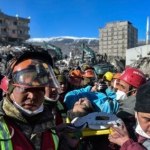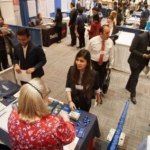14 February 2023
Hundreds of thousands of American students have dropped out of public schools since the start of the COVID-19 pandemic. They have essentially gone missing from schools.
An examination by The Associated Press, Stanford University's Big Local News project and Stanford education professor Thomas Dee reached some of the "missing" students. They found an estimated 240,000 students in 21 states whose absences from school could not be explained. These students did not move out of state. They did not sign up for private school or home-school.
Missing students received a lot of attention in 2020 after the pandemic closed schools around the country. In the years since, however, missing students have largely become a budgeting problem.

Ezekiel West, 10, stands for a portrait outside his home in Los Angeles on Sunday, Jan. 15, 2023. (AP Photo/Damian Dovarganes)
School leaders and some state officials worried about how they would lose financing if the students did not return. More students means more money from the city, state and federal governments.
There is no longer urgency to find the students who disappeared from school. Early in the pandemic, school workers would go to students' homes to try and help them return to the classroom. Most such efforts, however, have ended.
A problem not discussed
The missing students identified by the AP and Stanford represent more than just a number. The study represents thousands of students who have may have missed out on the basics of reading and other skills in kindergarten and first grade.
Discussion of children's recovery from the pandemic has centered largely on test scores and performance. But Dee, the Stanford expert, said the data suggests a need to understand more about children who are not in school and how that will affect their growth.
"This is leading evidence that tells us we need to be looking more carefully at the kids who are no longer in public schools," he said.
Over months of reporting, the AP learned of students and families avoiding school for many reasons. Some are still afraid of COVID-19. Others are homeless or have left the country. Some students could not study online and found jobs instead.
During the long period of online learning, some students fell so far behind that they no longer knew how to behave or learn at school. Many of these students are still officially on school rosters. That makes it harder to truly count the number of missing students. The real number of young people not receiving an education is likely much higher than 240,000.
Losing the school connection
The AP and Big Local News found that public school enrollment fell by 710,000 students between the 2019-20 and 2021-22 school years. That number includes the 21 states that provided the necessary data. It also includes numbers from Washington, D.C.
Those states saw private-school enrollment grow by over 100,000 students. Home-schooling grew even more, increasing by more than 180,000.
But the data showed 240,000 students who were neither in private school nor attending home-school. Their absences could not be explained by population loss, like falling birth rates or families who moved out of state.
States where kindergarten is not required were more likely to have larger numbers of students who are unaccounted for. That suggests the missing students also include many young learners who have stayed at home instead of starting school.
The true number of missing students across the country is likely much higher. The study does not include data from 29 states or the unknown numbers of so-called ghost students -- children who are enrolled in school but rarely make it to class.
When schools provide little support
Officials of the Unified School District of Los Angeles, California, have spoken about attempts to find unschooled students and help remove barriers that prevent them from coming to school.
The district has offered clothes-washing services and help with housing. But some students and their parents say their problem is with a school system that they say has failed their children.
Allison Hertog represents more than 30 families whose children missed a lot of time learning when California's classrooms closed for more than a year early in the pandemic. She said, "Parents are bereft." In other words, parents feel hopeless and are without necessary support.
Los Angeles student Ezekiel West is in fourth grade but reads at a first-grade reading level. Before the pandemic shutdowns, he moved from school to school when educators could not deal with his poor behavior.
During online learning, Ezekiel's mother had trouble getting internet for her son to attend class. When Ezekiel returned to school in the fall of 2021 as a third grader, Ezekiel was unhappy that other students had made more progress than he had.
A California judge ruled that Los Angeles' schools had violated Ezekiel's rights. The judge ordered the city's school district to give Ezekiel a place at a new school, with a special plan to ease him back into learning and building trust with his teachers.
The school did not follow the plan. Last October, his mother stopped sending him to school.
Last month, Ezekiel signed up for a public online school for California students. Hertog, his lawyer, is worried that the program will not work for someone with Ezekiel's needs. The family is looking for yet another choice.
At least three of the students Hertog has represented have been missing from school for long periods since in-person learning restarted. Their situations, she said, were avoidable. She added, "It's pretty disgraceful that the school systems allowed this to go on for so long."
I'm Dan Novak. And I'm Jill Robbins.
Dan Novak adapted this story for VOA Learning English based on reporting by The Associated Press.
______
Words in This Story
professor — n. a teacher especially of the highest rank at a college or university
absence — n. a period of time when someone is not present at a place, job, etc.
basic — adj. forming or relating to the most important part of something
kid — n. a young person
roster — n. a list of the people or things that belong to a particular group, team, etc.
enroll — v. to take as a member or participant
disgrace — n. the condition of feeling ashamed or of losing or becoming unworthy of respect or approval
allow — v. to permit to have or do something













